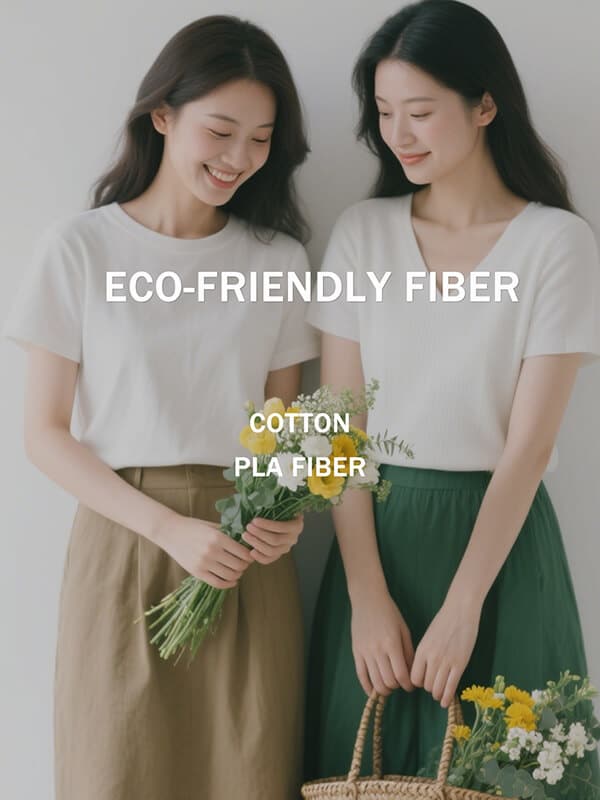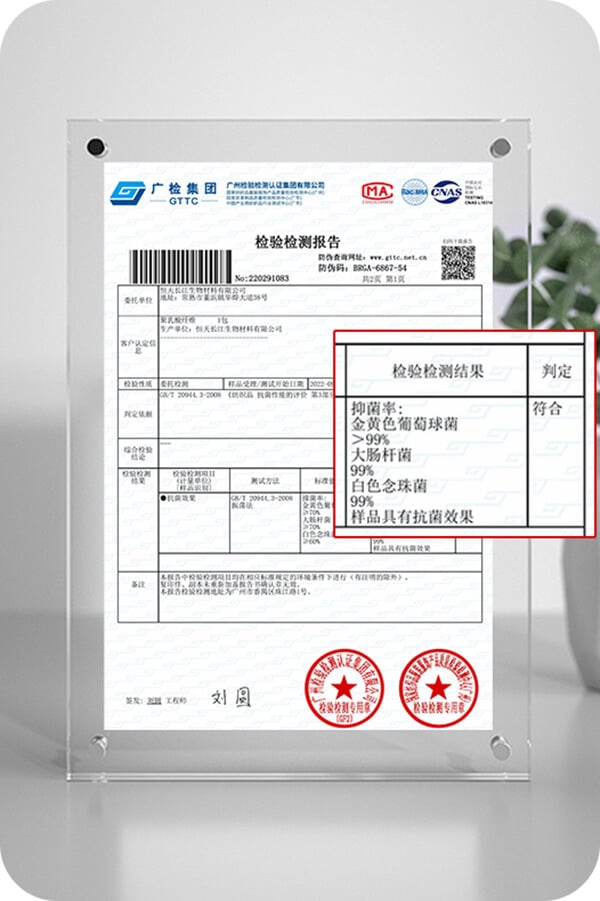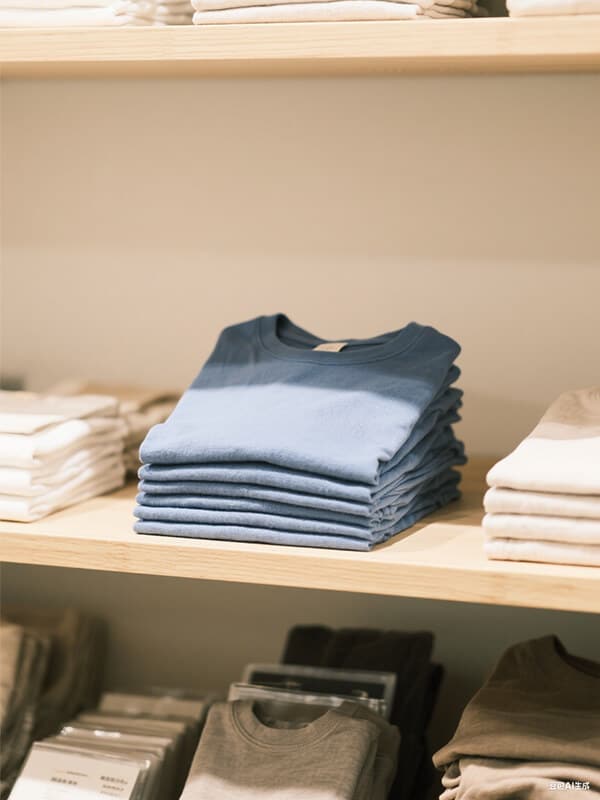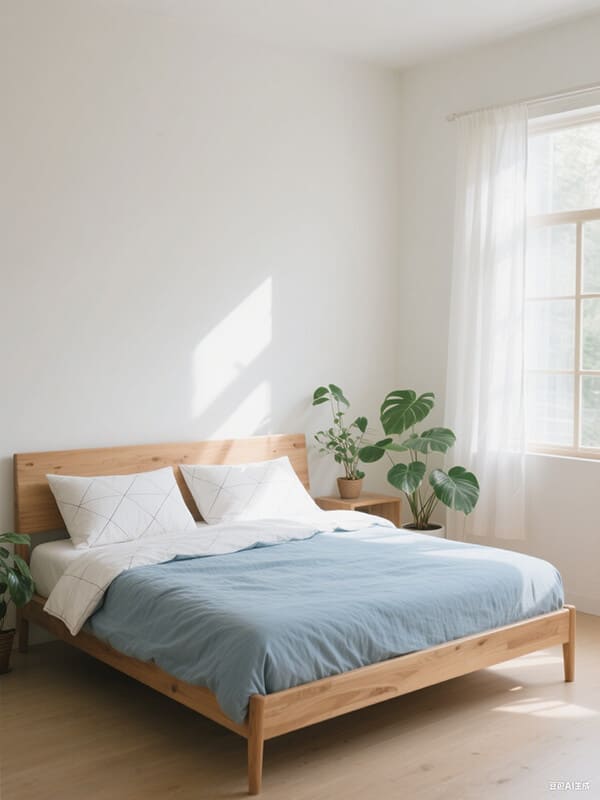Cotton fiber has long been a “national-level favorite” in the textile industry due to its natural composition and soft texture. It is widely used in the apparel industry, especially for close-fitting garments. However, cotton products also have drawbacks such as “easy wrinkling, shrinkage, and slow drying,” particularly in humid weather, where they can easily become breeding grounds for bacteria.
In recent years, the application of new materials in the textile industry has provided users with more diversified options. The blending of polylactic acid (PLA) fibers with cotton fibers is offering new solutions and experiences for the industry.
1.PLA Fiber + Cotton Fiber: Packaging Sustainability and Comfort Together

✨ Soft × Structured
Cotton fiber is naturally soft, while pure PLA fabric tends to be stiffer. A PLA-cotton blend makes the fabric less prone to wrinkling and easier to care for, offering more convenience for daily wear.
✨ Skin-Friendly × Breathable
PLA inherently offers excellent breathability and moisture-wicking properties. When combined with cotton, it further enhances the fabric’s ability to absorb and disperse moisture, creating a “breathable” textile.
✨ Antibacterial × Deodorizing
PLA fibers have a pH value close to that of human skin, excellent biocompatibility, are hypoallergenic, and safe for use. With its natural antibacterial properties, PLA can resist mold and odor, making it highly suitable for close-to-skin clothing and ideal for sensitive skin.
According to test results, PLA fiber shows good antibacterial effects against Staphylococcus aureus, Escherichia coli, and Candida albicans.

✨ Natural × Eco-Friendly
One originates from cotton fields, the other from plant-based starch. Their combination makes this fabric eco-friendly “from source to end,” representing a truly sustainable material solution.
2. PLA-Cotton Blended Fabrics Are Being Widely Applied Across Multiple Fields

✨ Everyday Apparel
PLA-cotton blends retain cotton’s soft, skin-friendly nature while adding the structured, wrinkle-resistant, and antibacterial features of PLA, offering users a “light-as-air, odor-free” wearing experience.

✨ Baby Products: Safe and Gentle, Caring for Every Inch of Delicate Skin
Both cotton and PLA fibers are bio-based materials. PLA bicomponent fiber can also be used as a thermal bonding material, reducing chemical irritation to the skin. Combined with PLA’s antibacterial properties, it is especially skin-friendly for babies.

✨ Home Textiles: Enhanced Texture, Safe and Eco-Friendly
Whether used in close-contact wear or in bedding like quilts and blankets, PLA-cotton blended fabrics are less likely to cause allergic reactions, offer antibacterial and anti-mite properties, and are suitable for sensitive skin.

✨ Sportswear: Moisture-Wicking and Quick-Drying, No More Sticky Sweat
PLA fiber has a unique capillary effect, enabling excellent moisture-wicking and quick-drying capabilities with good breathability. In summer, its moisture vapor transmission and water diffusion properties perform well, allowing quick evaporation of sweat and body heat. It offers a soft, skin-friendly, and dry user experience.
The moisture absorption performance is related to the structural morphology of the fiber. The longitudinal surface of PLA fibers shows irregular spots and discontinuous stripes, with pores or cracks that easily form a capillary effect, resulting in excellent wicking, wetting, and water spreading properties.
Additionally, PLA’s antibacterial and deodorizing properties help reduce unpleasant odors caused by sweat, making workouts worry-free.
Cotton represents our traditional aesthetic and comfort needs; PLA embodies the functionality and sustainability of the new era. Their blend signifies not only an industry innovation but also a lifestyle upgrade.
ESUN is mainly dedicated to the development of polylactic acid fibers and nonwoven fabrics. Feel free to contact us for cooperation if you are interested in the above.





